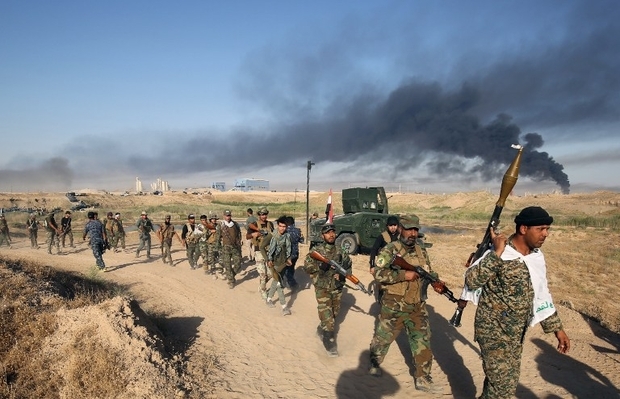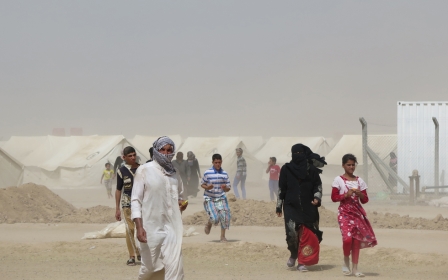Islamic State mixing with civilians to flee Fallujah

Iraqi forces on Monday said some Islamic State (IS) group militants were fleeing Fallujah by blending in with civilians who have been escaping the besieged city by the thousands in recent days.
The Pentagon said meanwhile that US Apache helicopters hit an Islamic State group target for the first time in Iraq, in the north of the country.
More than 500 suspected IS members have been arrested for trying to sneak out with civilians since forces ramped up efforts to retake Fallujah, one of the group's most emblematic bastions, two weeks ago.
"We have arrested 546 suspected terrorists who had fled by taking advantage of the movements of displaced families over the past two weeks," said Hadi Rzayej, the police chief for Anbar province in which Fallujah is located.
"Many of them were using fake IDs," he said from the southern edge of Fallujah, where Iraqi forces are pressing a three-week-old offensive to retake the city from IS.
When civilians reach government forces, teenage boys and adult men are screened separately. Some are released after a few hours while others undergo more thorough interrogation.
"Daesh (IS) is fleeing among the civilians, we have arrested many and are investigating the suspects," said Abdelwahab al-Saadi, the overall commander of the operation.
Until last week, an estimated 50,000 civilians were still trapped in the centre of the city, which is one of the group's last bastions in Iraq and lies only 50 kilometres west of Baghdad.
The Iraqi army on Saturday opened a corridor to the southwest of the city that has allowed thousands of civilians to escape IS rule and reach displacement camps.
UN deputy representative to Iraq Lise Grande said on Monday that more than 7,000 people have fled Fallujah in recent days using the safe corridor set up by Iraqi forces, which were working on opening a second protected route.
Yet the flow of residents fleeing via the corridor and through the Al-Salam intersection to the southwest of the city, appeared to dry up on Monday, the Norwegian Refugee Council's Karl Schembri said.
"We haven't seen a continuation of the trend," he said, adding that groups of civilians are trapped in northern Fallujah neighbourhoods.
He said nonetheless that more than 2,600 new arrivals had been recorded in displacement camps on Monday, mostly civilians from the outskirts of the city.
Estimates for the number of IS fighters holed up in Fallujah vary from 1,000 to 2,500.
Fallujah is the oldest IS stronghold in Iraq, the first city taken by the militants, late in December 2013.
Iraqi troops have made good progress and no more than a kilometre now separates them from the centre of the city, military sources told MEE.
However, their advance has been slowed by thousands of booby traps, roadside bombs and snipers, as well as ditches filled with water and dirt embankments that the militants have built up around the city to hinder the approach of the troops and also to trap tens of thousands of civilians inside.
A vast offensive was launched on 22-23 May to retake Fallujah, with a first phase, involving Shia militias, aimed at sealing the siege of the city.
While offensives on other cities such as Ramadi or Tikrit often offered enemy fighters an escape, Fallujah is almost completely cut off from the rest of IS's self-proclaimed "caliphate".
"Some fighters can flee under the cover of darkness, but only on foot and with no logistics and definitely not in convoys," said Saadi.
New MEE newsletter: Jerusalem Dispatch
Sign up to get the latest insights and analysis on Israel-Palestine, alongside Turkey Unpacked and other MEE newsletters
Middle East Eye delivers independent and unrivalled coverage and analysis of the Middle East, North Africa and beyond. To learn more about republishing this content and the associated fees, please fill out this form. More about MEE can be found here.




